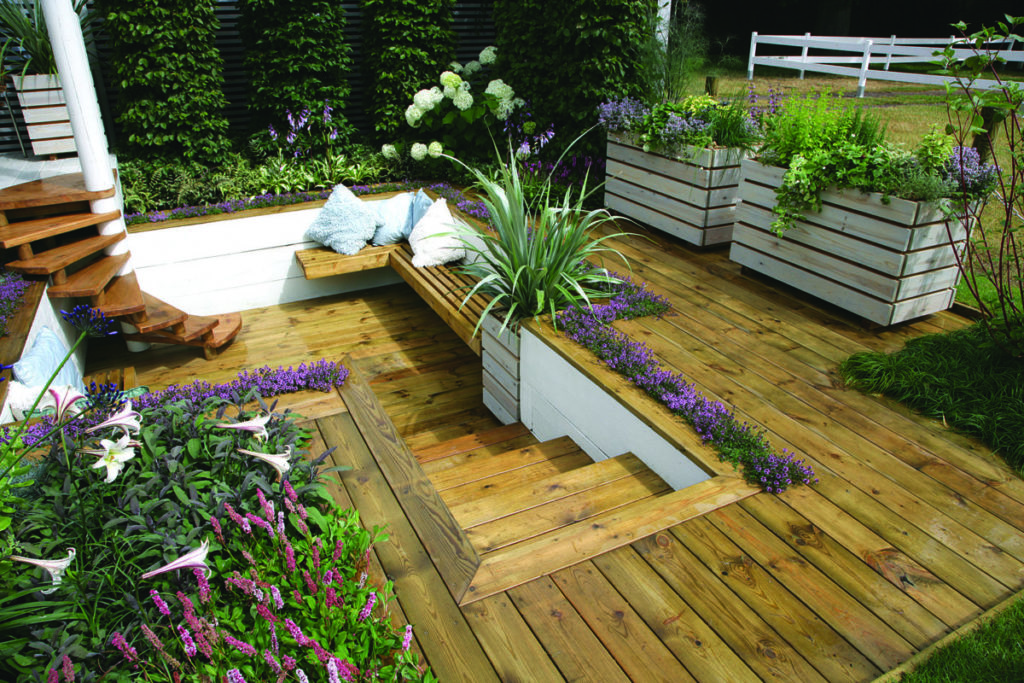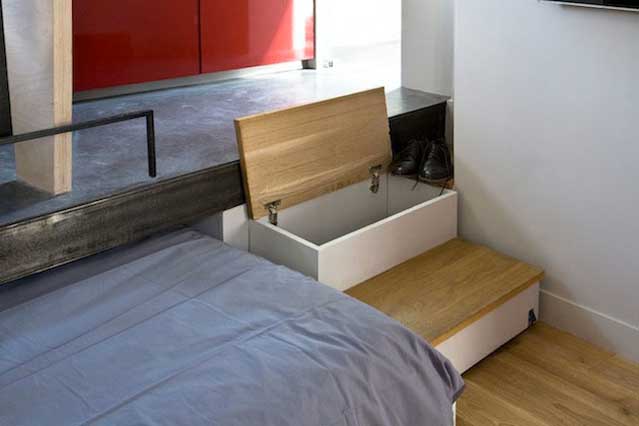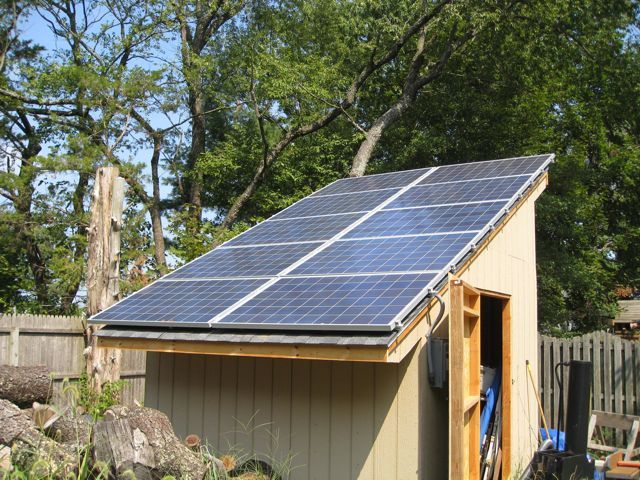Living in a tiny home can be a dream come true, but it also comes with its own set of challenges – especially when it comes to gardening.
However, even the smallest spaces can be transformed into thriving gardens with the right techniques and tools.
Whether you have a balcony or roofdeck, you too can enjoy fresh air, lush greenery, and delicious homegrown produce just steps away from your front door.
We’ll explore some proven small space gardening strategies to help you grow vibrant plants in even the tiniest of spaces.
So let’s get started!
Choose the right plants
Select plants that are well-suited for the conditions on your balcony or roofdeck, such as succulents, herbs, and other drought-tolerant plants.
For example, succulents are a great option for balconies and roofdecks, as they are able to thrive in dry and sunny conditions.
These plants are also low maintenance, making them a great choice for busy gardeners.
Herbs are another excellent option, as they not only add flavor to your cooking, but they also require very little care.
Consider incorporating other drought-tolerant plants, such as sedums, agaves, and echeverias, which can add a touch of color and interest to your outdoor space without requiring excessive watering.
By selecting plants that are well-suited for the conditions on your balcony or roofdeck, you’ll be able to enjoy a thriving and beautiful garden with minimal effort and upkeep.
Use container gardens
Instead of trying to plant directly in the balcony or roofdeck, use container gardens to create a more controlled environment for your plants.
Using container gardens is a brilliant idea for growing plants on your balcony or roofdeck!
Unlike traditional planting methods, container gardens allow you to create a more controlled environment for your plants, tailoring the soil, light, and temperature conditions to their specific needs.
This not only ensures optimal growth and health, but it also opens up a wider range of plant options, including those that may not thrive in your local climate.
Container gardens provide a flexibility that traditional planting methods cannot match.
You can move your plants around or store them away during harsh weather conditions, allowing you to enjoy your green space all year round.
With container gardens, you can grow a wide variety of plants, from herbs and vegetables to flowering plants and even small trees, all within a compact and controlled environment.
Try using container gardens on your balcony or roofdeck today and reap the numerous benefits they have to offer!
Utilize vertical space
Make the most of your limited space by using vertical gardening techniques such as trellises, arbors, and wall-mounted planters.
One of the most effective ways to maximize your limited space in your urban home is to utilize vertical space by incorporating vertical gardening techniques.
Trellises, arbors, and wall-mounted planters are great options for growing vines and climbing plants such as beans, peas, and cucumbers.
These plants will not only add beauty to your outdoor space but also provide you with a bountiful harvest.
For instance, you can install a trellis made of wooden or metal bars in your backyard to support climbing plants like peas or beans.
You can also use arbors, which are similar to trellises but have a more rustic and charming appearance, to grow flowering vines like wisteria or clematis.
You can make use of wall-mounted planters to grow herbs like basil or mint near your kitchen window for easy access.
By using vertical gardening techniques, you can effectively utilize your limited space and create a productive and beautiful garden in your urban home.
Optimize your lighting
Make sure your plants are getting enough light, even if it’s just natural light. Consider using grow lights if necessary.
Optimizing your lighting is important for the health and well-being of your indoor plants.
While natural light is ideal, some plants may not receive enough light due to factors such as limited window space or the location of the plant in your home.
In these cases, consider using grow lights to supplement the natural light your plants are receiving.
Grow lights can be placed in a strategic location to provide the necessary light spectrum and intensity for your plants to thrive.
You should ensure that your plants are positioned in a way that allows them to receive consistent light throughout the day.
Avoid placing plants in areas with excessive shadows or indirect light, as this can hinder their growth and development.
By optimizing your lighting, you can ensure that your indoor plants are receiving the light they need to photosynthesize, grow, and thrive.
Water wisely
Overwatering can be just as detrimental as underwatering, so make sure to water your plants sparingly and only when necessary.
Watering your plants wisely is important for their health and survival.
Overwatering can be just as detrimental as underwatering, so it’s essential to water your plants sparingly and only when necessary.
Overwatering can lead to a range of problems, including root rot, fungal diseases, and pests.
When the soil is consistently waterlogged, the roots can become oxygen-deprived, which can lead to their decay and the eventual death of the plant.
Moreover, an overabundance of moisture can create an ideal environment for pests and diseases to thrive, further weakening your plants.
On the other hand, underwatering can also cause significant harm to your plants.
Without sufficient moisture, the plants may become stressed, leading to stunted growth, yellowing of the leaves, and reduced fruit and flower production.
However, it’s important to note that some plants are more resilient to underwatering than others, and some may even benefit from a period of drought.
To avoid these issues, it’s important to monitor the moisture levels in the soil and only water your plants when necessary.
Stick your finger into the soil up to the second knuckle, and if the soil feels dry, it’s time to water.
Avoid getting water on the leaves to prevent fungal diseases, and use a drip irrigation system or soaker hose to deliver water directly to the roots.
By watering your plants wisely, you can ensure they receive the right amount of moisture to thrive, while also avoiding the dangers of overwatering and underwatering.
Embrace the minimalist mindset
Don’t overcrowd your space with too many plants – it’s better to have a few well-cared-for plants than a bunch of neglected ones.
When it comes to adopting a minimalist mindset in your home, one of the most important things to keep in mind is the number of plants you have.
While it can be tempting to fill your space with as many plants as possible, this approach can often lead to neglect and a lack of attention to each individual plant.
Instead of overcrowding your space with too many plants, it’s better to have a few well-cared-for plants that receive the attention and care they need to thrive.
By focusing on a few, high-quality plants, you can ensure that each one receives the proper care and maintenance, such as regular watering, pruning, and fertilization.
This not only leads to healthier and happier plants, but it also creates a more intentional and purposeful environment in your home.
Having a few well-cared-for plants can help to create a sense of calm and serenity in your space, making it a more enjoyable and relaxing place to be.
Take advantage of crevices
Utilize the crevices and corners of your balcony or roofdeck to create a more lush and varied garden.
To maximize the potential of your balcony or roofdeck garden, consider utilizing the crevices and corners of the space.
These small, often-overlooked areas can be transformed into thriving microclimates for a variety of plants.
For example, you can install trellises or arbors to train climbing plants like beans, peas, or clematis to scale the walls or provide shade for delicate plants.
You can also use crevices to grow compact herbs like thyme, oregano, or mint, which can thrive in the tight spaces.
Moreover, you can fill the corners with larger pots or containers to accommodate bushier plants like roses, boxwood, or flowering shrubs.
By taking advantage of the crevices and corners, you can create a more lush and varied garden that adds depth and interest to your outdoor space.
Incorporate DIY projects
Use recycled materials and DIY projects to add character and personality to your small space garden. For example, you could use old rain gutters as planters or repurpose an old window as a greenhouse.
Incorporating DIY projects into your small space garden can not only add character and personality, but also provide a unique and sustainable way to upcycle and repurpose materials.
One creative idea is to use old rain gutters as planters, which can be easily mounted on a wall or fence.
This not only provides a functional planter, but also adds an eye-catching design element to your garden.
Another idea is to repurpose an old window as a greenhouse, which can provide a warm and sheltered space for growing delicate plants or seedlings.
By using recycled materials and DIY projects, you can create a one-of-a-kind garden that reflects your personal style and commitment to sustainability.
With a little creativity and elbow grease, you can turn ordinary materials into extraordinary garden features that will make your small space garden stand out from the crowd.
Want More? Dive Deeper Here!
Hey there! If you’re the type who loves going down the rabbit hole of information (like we do), you’re in the right spot. We’ve pulled together some cool reads and resources that dive a bit deeper into the stuff we chat about on our site. Whether you’re just killing time or super into the topic, these picks might just be what you’re looking for. Happy reading!






